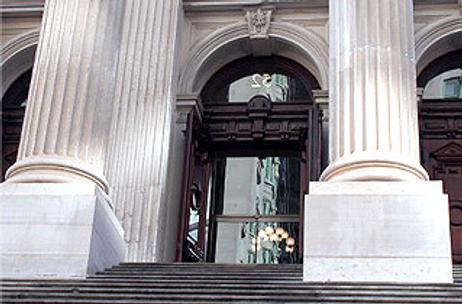The New York City Department of Education oversees the largest school district in the United States. This system has been responsible for the public schools in all five city boroughs for the past four decades. It is one of the few school systems in the country that is controlled by the city's mayor rather than an appointed school board. In addition to being the largest school network, it is also one of the most segregated in the country, which leads to numerous challenges in ensuring the many students in the system that come from a huge range of backgrounds all receive the same opportunities and education within the city limits.
How it Started
According to Wikipedia, the New York City Department of Education started in 1969. At that time, the mayor of the city, John Lindsay, organized the department of education to oversee high schools, while 32 individual school boards managed all the elementary and middle schools. This system continued in this manner until 2002, when full control of the school system was given to the city's mayor.
The Board of Education became the Panel for Education Policy – an office managed by 12 members appointed by the mayor. The Panel for Education Policy was responsible for 10 regions created by the mayor and took the place of the 32 districts that had been in place previously. Those regions were short-lived, however. In 2007, when Mayor Michael Bloomberg took office, the regions were completely dissolved; instead, schools were organized into various School Support Organizations.
This video offers a glimpse of high schools in the 1950s.
NYC Department of Education Today
The NYC Department of Education website states that the city’s 1,700 schools are now home to approximately 1.1 million students and 75,000 teachers. The school system has grown considerably in recent years, adding more than 500 new schools over the past decade alone. The system also boasts an annual budget of around $24 billion, which sounds like ample funding until one begins talking to some who work directly within the school’s system.
In 2011, Mayor Bloomberg appointed the current chancellor of the NYC Department of Education, Dennis M. Walcott. In his short tenure as chancellor, Walcott has faced more than his share of challenges, from overcrowded classrooms, new methods of evaluating teachers, and recovery from the largest hurricane ever to hit the New York coastline. Walcott leads the school system with help from the leadership team on the Panel for Education Policy.
The Panel for Education Policy consists of 13 appointed members. Five members are appointed by each individual borough president, ensuring all five boroughs are equally represented on the panel. The other eight members are appointed directly by the mayor. The chancellor, also appointed by the mayor, is considered a part of the panel. The 13-member team is also responsible for electing their own chairperson from among their ranks to oversee their official business.
This video offers a look at the New York City schools in the 1960s.
Zoning and School Buildings
Currently, all of the areas of New York City are zoned for elementary and middle schools. According to the Department of Education Loans, some high schools in specific areas of the city are also zoned. Zoning means students living within a particular area are slated to attend the school representing that area. However, many of the high schools in the city are not zoned, allowing students to attend the school of their choice once they reach their secondary years. Once they choose a school, they must apply and be accepted before they can officially enroll.
Many of the school buildings throughout New York City are considered noteworthy in terms of their architecture or history. Some of the larger schools have been transformed into campuses that house smaller, independent schools, a trend the city is becoming known for as they move toward the smaller school environment for the perceived benefit of the students. These smaller schools meet on the same campus but in different building areas. They may share sports teams and other activities if the individual schools are too small to sustain themselves.
This video looks at New York City schools in 2001.
Finding Data on New York City Schools
Parents, lawmakers, and students want to know various facts about the school in New York City. This information is compiled and kept on file with the New York City Department of Education. According to the Research Alliance for New York City Schools, some of the data currently on file includes:
- Current records involving registration, enrollment, and attendance
- Class sizes by city, borough, district, and individual school
- School surveys completed by parents, teachers, and students
- Reports on school-based expenditures, broken down into broad categories
- Progress reports, which feature a letter grade for each individual school
- Results from citywide math and English examinations
Nearly all of this information can be found on the NYC Department of Education website, making it relatively easy for anyone desiring to learn more about the school system to access information from any location.
The New York City Department of Education believes neighborhood schools are the centerpiece of a successful, thriving community. The office works hard to maintain the highest possible standards in a massive school system that sees more than a million students daily. Under the watchful guidance of the mayor and governing panel, the NYC Department of Education strives to provide the best education to its students. The system is far from perfect, but it takes pride in its efforts to hold schools accountable for student achievement and provide the necessary choices that allow students to succeed in their academic endeavors.
Questions? Contact us on Facebook. @publicschoolreview















